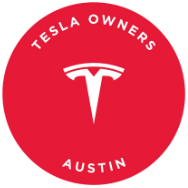Tesla CEO Elon Musk has recently announced exciting advancements in the company’s Full Self-Driving (FSD) software, with plans to integrate some of the cutting-edge features from its unsupervised Robotaxi program. This move is expected to bring a significant performance boost to Tesla’s FSD software, marking a “step change” in capabilities.
In a series of tweets, Musk disclosed that the enhancements being tested in Tesla’s Austin pilot program are set to revolutionize the FSD software. However, he emphasized the need to ensure that these improvements do not introduce any issues in other regions before rolling them out fleet-wide. Additionally, regulatory approval is being awaited for the deployment of FSD in Europe and China, with Musk expressing optimism that the green light will be given soon.
The integration of Robotaxi technologies into FSD was first hinted at by Musk in June, when he mentioned the development of a new version of the software specifically for the Austin fleet. This specialized branch is expected to eventually merge into the main production release, offering users a more advanced and efficient driving experience.
Furthermore, Musk revealed that a more powerful FSD model is currently in alpha testing, boasting four times as many parameters as the existing version. Despite the need for some final refinements, Musk indicated that the model is progressing well and could potentially be released in Q3.
Looking ahead, Tesla has ambitious plans to expand its Robotaxi pilot program to the Bay Area once regulatory approvals are in place. Musk praised the authorities for their reasonable approach to autonomous vehicle testing, hinting at a smooth transition for the program expansion.
With these major upgrades on the horizon and the possibility of increased Robotaxi deployments, Tesla’s vision for autonomous driving is rapidly gaining momentum. The company’s relentless pursuit of innovation in the self-driving space underscores its commitment to revolutionizing the future of transportation.

